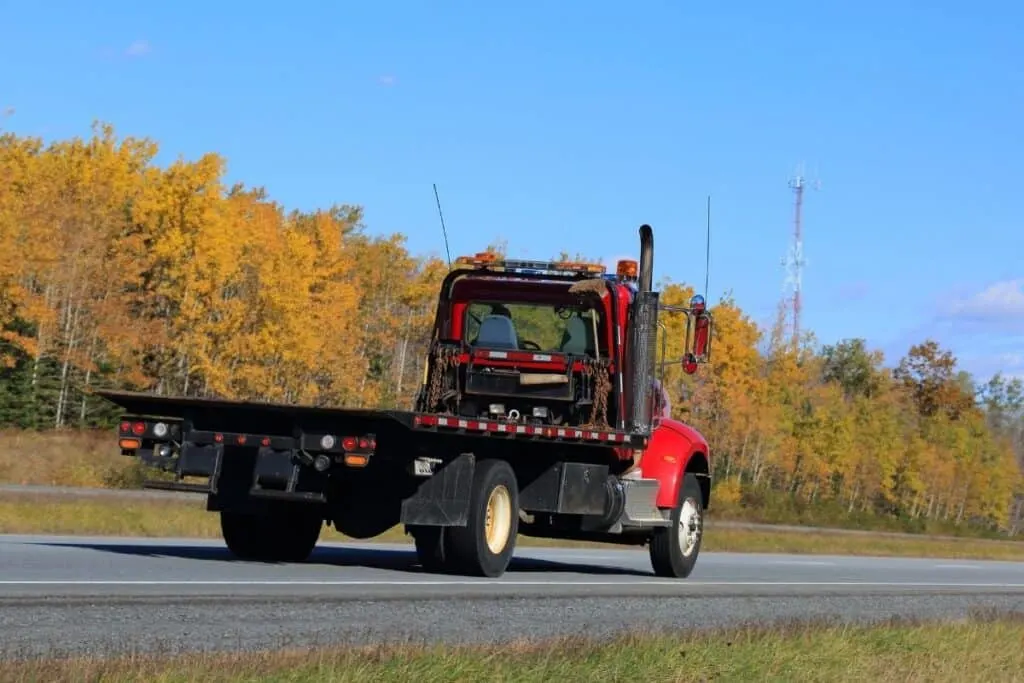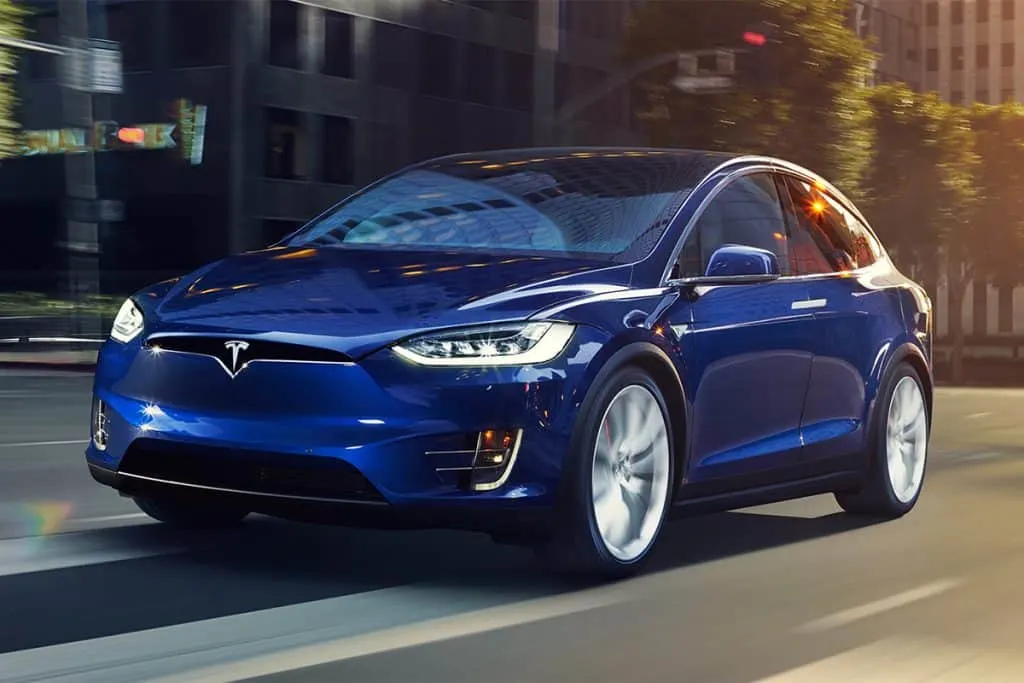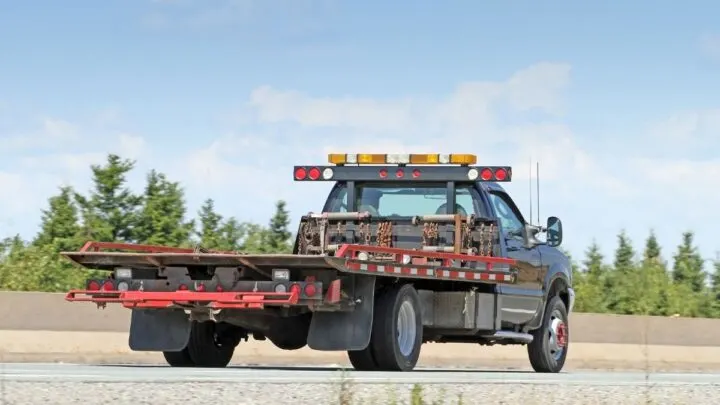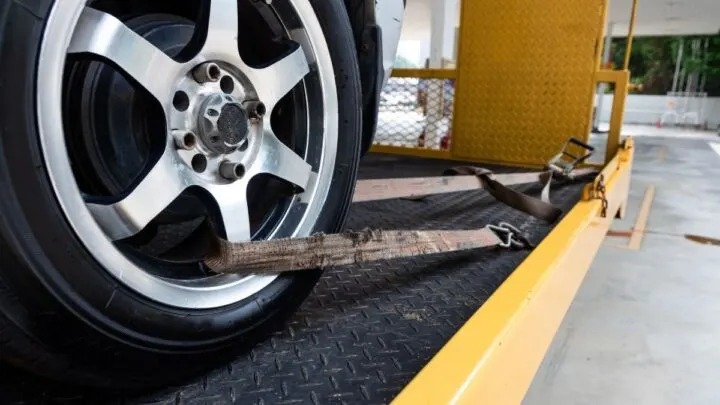Whether you have a Model 3 or another Tesla, you have one of the best electric cars on the road. However, that doesn’t mean you won’t have a situation that requires your Tesla to be towed.
The only approved method of towing a Tesla involves transporting it with all four wheels off the ground using a flatbed tow truck or wheel lifts and dollies. Because the wheels generate power when they spin, towing with the wheels in contact with the ground can result in overheating and significant damage.
If you’re wondering more about this option, make sure to keep reading to learn more about how to safely tow your Tesla!
Table of Contents
While you’re researching Tesla info, bookmark this article on reasons why your Tesla battery is draining fast.
Will Towing a Tesla Damage It?
When we answer this question, it may seem as if we are straddling the fence, since our answer will be yes and no. While your Tesla can be towed if done so properly, ignoring the Tesla recommended towing process aside could result in significant damage to your car!
To begin with, we always suggest you abide by the instructions found in your Tesla’s owner’s manual.
Once you start looking through the manual, you’ll find it recommends all four of your Tesla’s wheels be off the ground during the towing process, meaning you’ll need a flatbed truck or trailer for the job.
If you have these options available to you, we can safely say you can tow your Tesla indefinitely!

Is It Safe to Tow a Tesla?
However, this changes should you not have a flatbed truck or trailer at your disposal, and instead are relying on wheel lifts and dollies.
When towing your Tesla using this method, you’ll need to be extremely careful and hope you only have to have your vehicle towed a very short distance.
While it’s generally safe to tow your Tesla, we cannot stress enough how critical it is that you follow the manufacturer’s instructions.
Should you be using wheel lifts and dollies for the towing job, you could severely damage your car should you need to tow it for a distance longer than 35 miles.
If your Tesla is towed a longer distance than this, the result can be damaged tires and possibly a damaged battery and electrical system, which could cost you thousands of dollars in repairs.
Unlike standard gas-powered vehicles, your Tesla generates energy when its wheels are turning, even when it is being towed. Thus, the longer the vehicle is being towed, the greater the energy that is being generated.
Unfortunately, we have seen many Tesla vehicles damaged in this manner.
Worst of all, since this is not the recommended way to tow a Tesla, some owners find themselves having to pay for the repairs out of their own pocket, since going against the manufacturer’s recommendations often voids the warranty protection.

Can You Flat Tow a Tesla?
While towing your Tesla on a flatbed truck or trailer is no problem and using wheel lifts and dollies can be used for a very short-distance tow, we can say without any doubt whatsoever that flat towing your Tesla is something you should never attempt to do under any circumstances.
If you do, we won’t be surprised to discover you not only have a severely damaged Tesla on your hands, but also one that has repairs that won’t be covered by the warranty.
Since your Tesla generates energy during towing, having it overheat could not only damage your car’s battery and electrical system but also possibly ignite areas near the car as well, leading to even more damage and serious injuries to others.
While flat towing is common for those who travel in an RV and want to take a car along to travel into areas that won’t accommodate an RV, you should not do this if you own a Tesla. Instead, we suggest you hook up a trailer to the back of your RV and transport your Tesla on top of it.
While flat towing is of course not recommended, some people choose to do this when their Tesla needs to be recharged. Though it sounds like a logical way to get the car charged up quickly, it’s anything but that!
In fact, towing a Tesla to recharge it is considered the most inefficient way to accomplish this task!
In situations such as these, you not only need a second vehicle to pull your vehicle, but the vehicle doing the towing will need to go at least 70 mph for miles and miles.
Even when doing so, your car will only generate a tiny amount of power.
To become fully charged, you would need to do this for at least 24 hours. Instead, find a charging station and get recharged in minutes, not hours or days.
For tips on Tesla charging, make sure to take a look at a few of the resources linked below.

How to Tow a Tesla (If You Do)
Now that you’ve heard many reasons as to why you should not tow your Tesla, we thought we’d provide you with some useful information as to how you can safely tow your Tesla to your next destination.
To begin the process, you will need to place your Tesla in Transport Mode. However, for this mode to be activated, your car will need to have power and be able to detect a key.
Once you have your Tesla in Transport Mode, always remember that this will greatly limit the acceleration of your vehicle. As a result, your Tesla will only be able to go three miles per hour for a distance of 30 feet.
If you try to increase the speed or distance while in Transport Mode, we virtually guarantee your car will overheat.
If your car needs to be winched so that it can be loaded onto a flatbed truck or trailer, Transport Mode is very helpful. Also, it can be used should you need to reposition your vehicle before it is towed.
When in Transport Mode, your car will display a “Free Rolling” message on its dashboard, meaning it has detected that the parking brake is off. Also, we recommend you double-check to make sure you have the car in Park.
Upon verifying you have the car in Park, press on the brake and hold it down. While doing so, tap your car’s touchscreen to select Controls, Service, and Towing.
Upon selecting the Towing option, you will see a message explaining how your Tesla’s Transport Mode operates and the restrictions involved with towing your vehicle.
Once you’re satisfied with everything, you can press the Transport Mode button and get started on your way!

Does My Car Need to Face a Certain Direction when Towing?
Again, we answer this question with both yes and no.
If you are towing your Tesla on a flatbed truck or trailer, it won’t matter whether the vehicle’s front or rear is loaded first. However, should you be using wheel lifts and dollies to tow your Tesla, always make sure the vehicle’s front is facing forward in the direction that it is being towed.
In doing so, your car’s rear wheels will be left free for the dollies.
How Do I Find My Vehicle’s Tow Eye/Tow Hook?
When it comes time to tow your Tesla, we know one of your first tasks will be to figure out where your car’s tow eye or tow hook is located. Rather than search in vain and become frustrated, simply lift up the carpet in your car’s front trunk.
Once you do, look in the upper left-hand corner, where it should be easily spotted. After finding it, gently press on the rounded portion, which will have the opposite end lift from your car’s trunk.
For your final step, pull the lifted end free until it releases, then attach and secure it to the winch so that your Tesla can be safely towed.
Should the need arise to tow your Tesla, follow our suggestions and Tesla’s recommendations to ensure your car remains damage-free.
